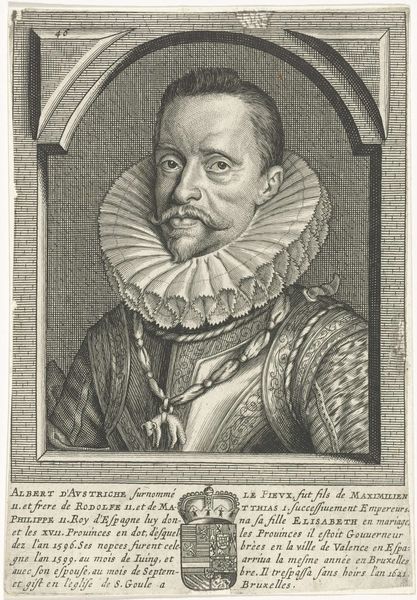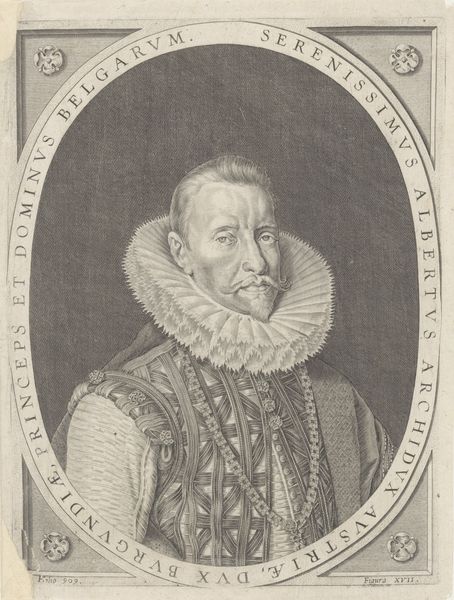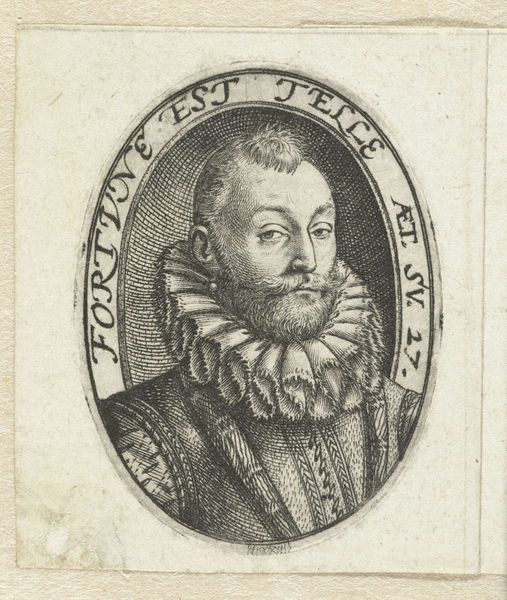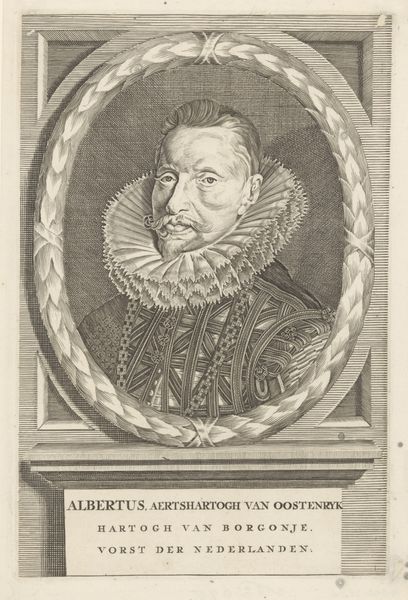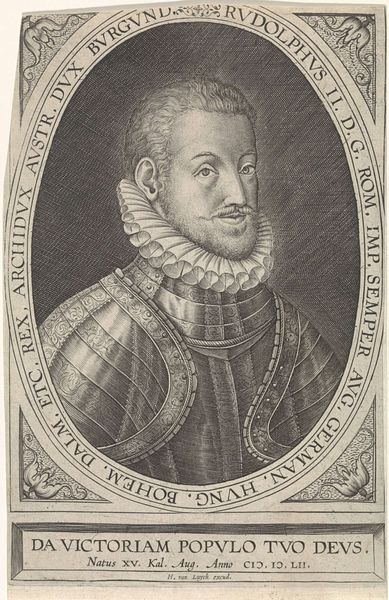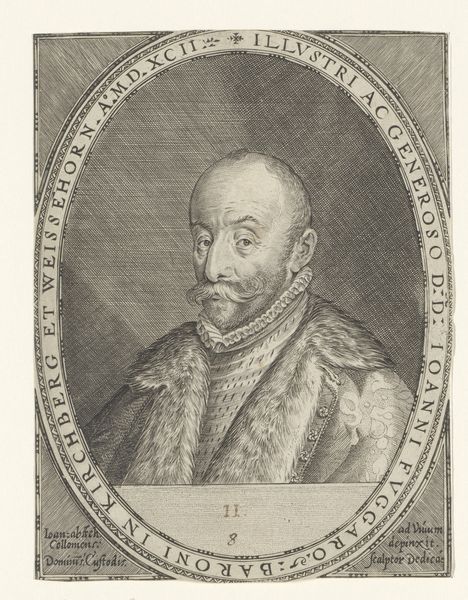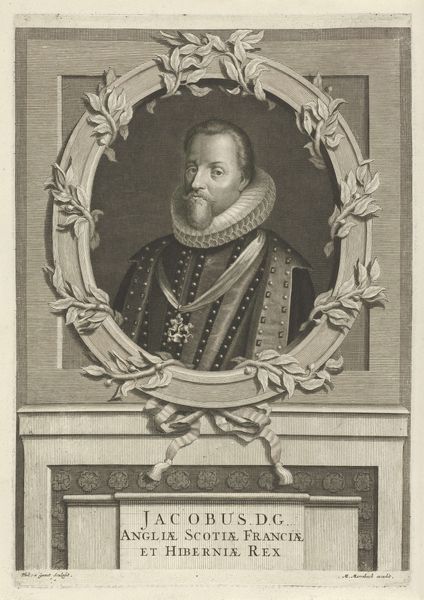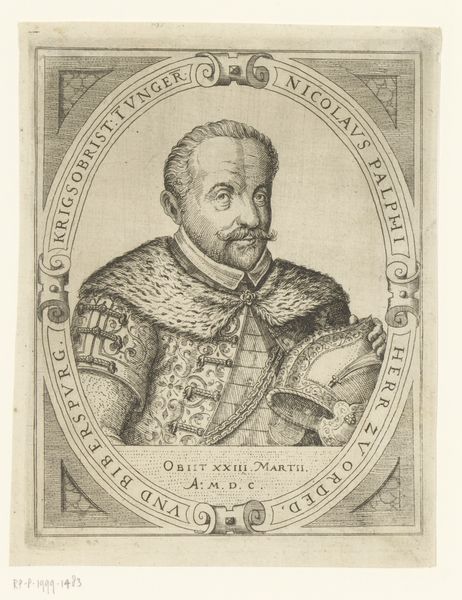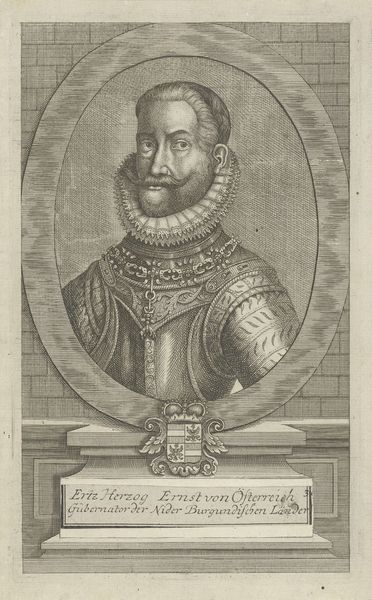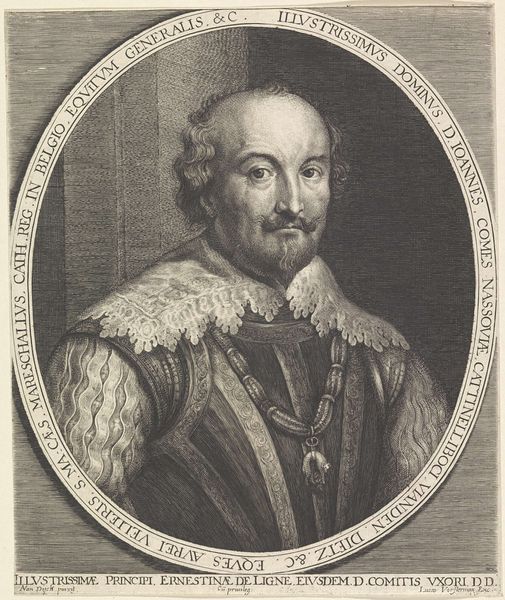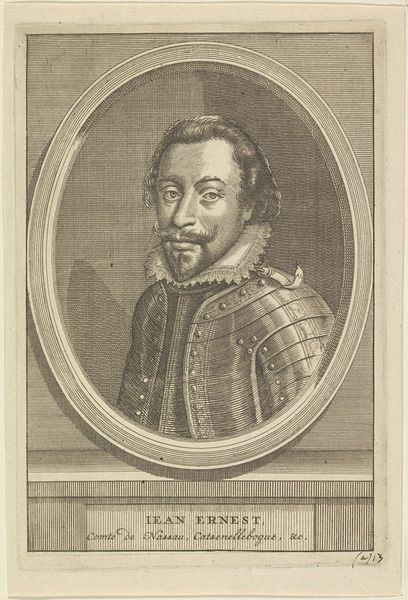
Dimensions: height mm, width mm
Copyright: Rijks Museum: Open Domain
Curator: Looking at this portrait of Christoph Fugger, engraved by Dominicus Custos in 1592, it immediately strikes me as an exercise in material control. Look at the fine lines creating the details, almost as if it’s a study in texture using only ink and paper. Editor: There’s a definite sense of power here. You can see the historical weight in that resolute gaze and the formal presentation, typical for portraits depicting societal figures like Fugger. Curator: The materials themselves contribute to that air of authority. Engraving allowed for the relatively easy production of multiple copies, disseminating Fugger’s image far and wide, constructing his identity. Editor: Precisely! The print medium speaks volumes about the rising merchant class during the Renaissance. Fugger was a prominent merchant, and his presence documented in this way underscores the importance of these powerful individuals in shaping society and patronage. Curator: What I find compelling is how the technical precision of the engraving contrasts with the softness of his face, achieved with such subtle variations in line thickness. The hand that guides the tool is visible, in a way. Editor: Consider also the setting. These were typically hung in galleries or studies, solidifying family reputation but also as public declarations of political power. The work as artifact served a concrete social function, right? Curator: Absolutely, and it begs the question: How many hands touched this image, both in its making and its distribution? How many people came to know Fugger not as a person but as a carefully crafted representation? Editor: Thinking about the art's broader role, these images offered visual anchors for social hierarchies. By commissioning these portraits, powerful families broadcasted, through both the artistic merit of their acquisition and the image itself, an indication of cultural dominance. Curator: Indeed. Examining this print through materiality helps to underscore how powerful families during this time were both consumers and drivers of artistic and social value, with everything from the paper itself to its dissemination method being carefully selected to reinforce authority. Editor: Exactly, the history lives within these materials and their function, adding weight to the portrait far beyond its artistic elements.
Comments
No comments
Be the first to comment and join the conversation on the ultimate creative platform.
